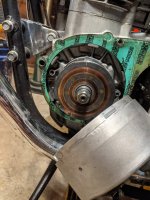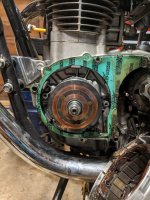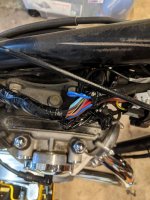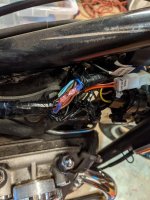LeftyKash
XS650 Enthusiast
Battery is new this year, and I took it back and had it tested- it's good.
Keyswitch meter shows 12.3 idle, 11.9-12 with brake plus turn at idle
What should I expect to see at idle with brake + flashers?
Keyswitch meter shows 12.3 idle, 11.9-12 with brake plus turn at idle
What should I expect to see at idle with brake + flashers?
From where to where? Are saying you put a separate ground on the TCI box, or that you ran a wire from the main harness ground out to the battery ground?I am a bit worried about that also.
I have a substandard wiring and have ground drawn directly to minus on battery via an extra wire.
I am at --- the TCI has not the right physics ,,power / ground
Last edited:




